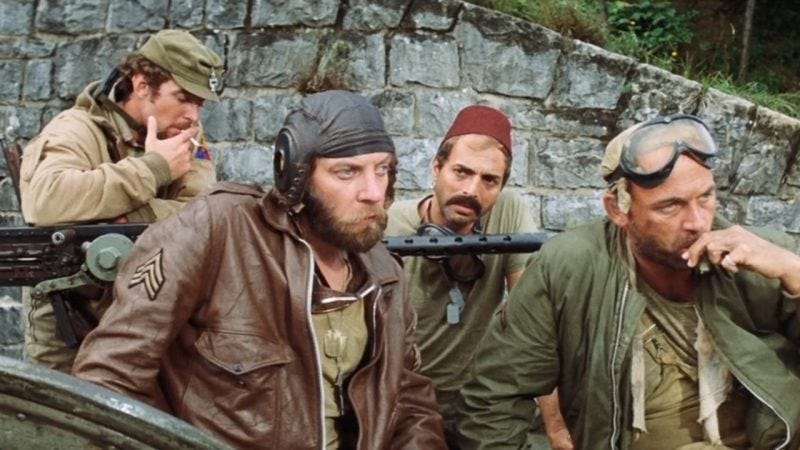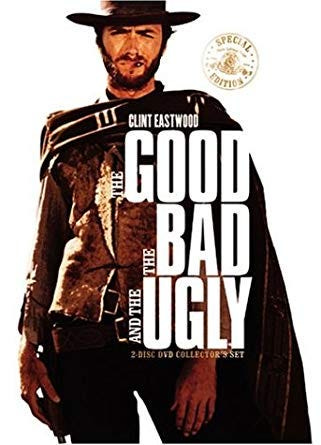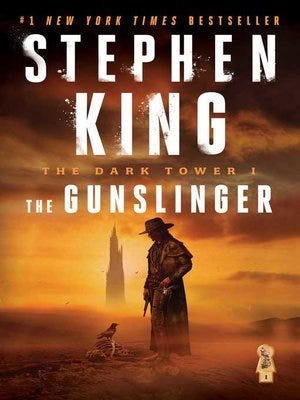Harnessing Moral Ambiguity in Fiction
This ain’t no place for no hero to call home. –The Heavy, “Short Change Hero”
Arguably, the issue of moral ambiguity is a guiding hand for much of my fiction these days — and I’m not the only one. I am a child of the 1990s and 2000s, a time of great moral ambiguity at every level of society. My mother and father were children of the 1970s and 1980s — again, another time of moral ambiguity. I grew up with plenty of the good guys wearing white hats. The sheriff rides into town, ready to face off with the baddies. I also grew up with morally conflicting stories like The Good, the Bad, and the Ugly, something I saw on a tiny twenty-five-inch screen (Sorry, crusty grognards, no giant silver screen for me, and I happened across the film via reruns on television) about thirty times during my youth. (Oh, I cannot forget films like Kelly’s Heroes, another Eastwood film with plenty of complex moral implications.)
Taken from Kelly’s Heroes (1970)
I remember when the United States invaded Iraq in 2003. It was a confusing time in my life: Watching the U.S. systematically draw and quarter Iraq’s government and military in an unfair matchup. It only began there. The moral issues of the war had a profound effect on me as I watched, listened, and talked about what was going on over there. I would argue that Iraq, and the whole fiasco that is the War on Terror, brought about a cultural sense of moral ambiguity. You see it in video games, the uber-novels of the early 2000s, and even in the movies and television shows we watch. There are no good guys or baddies per se. Instead, there are simply people trying to survive, trying to hustle their way to a better life. We see varying shades of gray, a true spectrum of humanity without the rose-tinted glasses getting in the way.
U.S. Army Sgt. Mark Phiffer stands guard duty near a burning oil well in the Rumaylah Oil Fields in Southern Iraq (Wikimedia Commons, 2019)
How do we harness this moral ambiguity of our time? Does it require research? Craft? Natural talent? A finger on the pulse of society? These are a good deal more complicated to answer, but I shall try my best.
Moral ambiguity requires a good deal of world-building on the part of the writer. This means we have to establish the rules of culture, linguistics, societies, and conflict in ways that promote the moral ambiguity we see in reality and wish to see in our fiction. World-building is just the first layer (of many) that will provide a structural framework for our use of moral ambiguity. For example, think of The Good, the Bad, and the Ugly (TGTBTU). The movie has two great pieces of world-building intertwined: The Wild West and the Civil War backdrop. Both offer plenty of opportunities to challenge a character’s or even a writer’s sense of morality. Don’t think so? Consider this: Remember that bridge chapter in TGTBTU? It provides the perfect vehicle for the characters, Blondie and Tuco, and their moral ambiguity. They are purely indifferent to the war and its various causes, including those nobler causes that every viewer knows watching the film. These characters are neither for the Union nor the Confederacy. They are simply out for their own — hey, aren’t we all? To get rid of the warring sides, the two characters destroy the key bridge, to get to the treasure on the other side without being interdicted by Confederate or Union troops.
Working alongside the world-building, we have wonderful character development and narrative tension. Blondie and Tuco, from the very beginning, show they are merely out for themselves, hustling to make it in the Wild (Wild) West. For those who haven’t watched the film, spoiler alert. Blondie and Tuco begin their tumultuous friendship by arranging a special deal that itself exemplifies their moral ambiguity: Blondie pretends to capture Tuco and turns him in for bounty reward money. Blondie then shoots Tuco down at the opportune moment, allowing him to escape the hangman’s noose and sure death with it. This is done over several instances before Blondie decides to cut ties. There’s nothing really personal about this. Blondie simply cuts the business relationship short, abandoning Tuco out in the desert. Again, this highlights the moral ambiguity that surrounds all of us. There are no good guys and no baddies— everyone exists with the oscillation between good and evil, so to speak, landing, on occasion, somewhere in between, never saintly nor truly the devil incarnate. Instead, we are left with a rather complicated moral geography, something that will entice readers if used with skill.
Language and research can lead to some interesting development as well if layered with good world-building and character development and narrative tension. Language and research allow the writer to add a bit of authenticity to the narrative, especially where it counts.I remember a college writing instructor saying that if you want a good character, go to a history book, you’ll find what you’re looking for. When it comes to language, study the texts that best exemplify your goal of creating a sense of moral ambiguity. I borrow heavily from video games, television, movies, books, and even visual texts like graphic novels and comic books. For issues about moral ambiguity, I borrow from the greats: Borderlands (the video game series), The Good, the Bad, and the Ugly (movie), Gunslinger (the first volume to Stephen King’s magnum opus, The Dark Tower series), and even Watchmen (the graphic novel that inspired the train wreck of a movie entitled Watchmen).
Like any narrative, all components have to come together. That means, the disparate elements need to meld in a way that is conducive for good storytelling. Although this article is more of a rumination on moral ambiguity than a solid bit of craft advice, it is best to remember that, when in doubt, you are the architect and you know the intricacies of your world, your universe, and the place your characters have within the cosmos and the complicated moral geography you’ve laid before them.
To Err Is Human is a blog by G. Michael Rapp (and visiting writers and content creators). Copyright 2024. All rights reserved. However, if you're using any content to add to an ongoing conversation, for teaching purposes, and/or for furthering the hobbies of gaming, storytelling, and worldbuilding, feel free to pull what you want from this blog, so long as you give credit to the original website (https://toerrishuman.xyz) and the author(s)/content creators in question.



